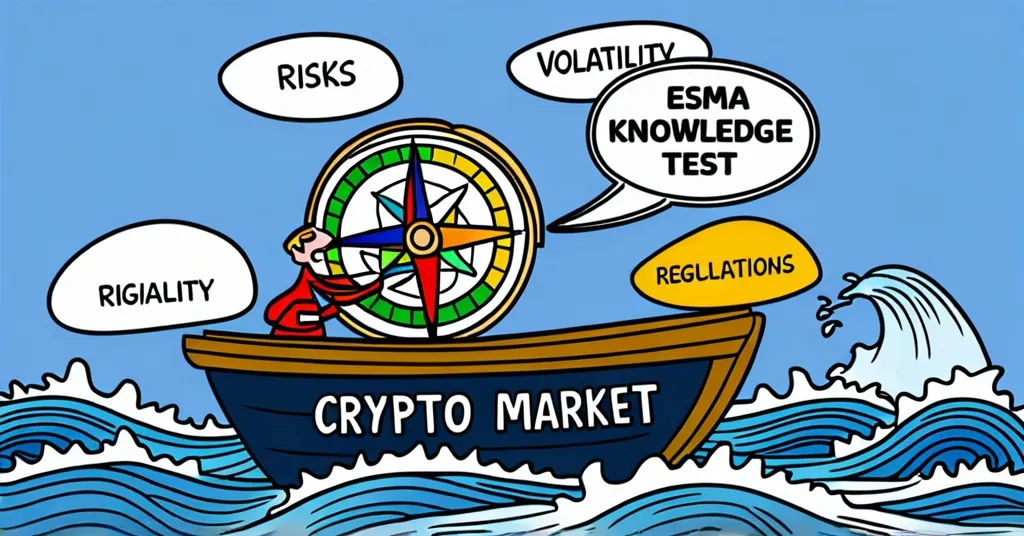ESMA Proposes Knowledge Test for Crypto Advisers to Boost Industry Standards

European Securities Regulator ESMA Prepares Knowledge Test for Crypto Advisers
Picture this: you’re ready to dive into the world of cryptocurrencies, hoping to ride the next big wave. But what if the person guiding you through this volatile ocean lacks the necessary compass? That’s the scenario the European Securities and Markets Authority (ESMA) is determined to avoid with its new knowledge test for crypto advisers. Under the Markets in Crypto-Assets (MiCA) regulations, ESMA is pushing forward a proposal to ensure that individuals working for Crypto-Asset Service Providers (CASPs) are well-versed in the complexities of digital assets.
- ESMA extends MiCA knowledge requirements to crypto advisers and information providers.
- Proposed assessments are influenced by MIFID II guidelines for investment product advisers.
- Topics include crypto asset characteristics, risks, tax implications, and volatility sources.
ESMA’s proposal isn’t just about adding more red tape. It’s a strategic move to bring the crypto industry up to the rigorous standards set for traditional investment products under the Markets in Financial Instruments Directive (MIFID II). The goal? To make sure anyone giving advice or even just information about crypto-assets knows their stuff inside out. This includes understanding the unique traits of crypto-assets, the myriad of risks involved, tax implications, fees, costs, and the rollercoaster of volatility. Crucially, advisers must grasp the different protections offered by MIFID II versus MiCA.
For newcomers to the crypto advisory scene, ESMA’s guidelines demand a solid background. New hires need either a university degree in economics, law, or business administration plus a year of supervised experience, or a secondary education degree along with three years of professional training and a year of supervised experience. For those already in the trenches, proving ongoing competence is non-negotiable. ESMA also suggests annual knowledge tests and continuous professional development to keep everyone’s skills sharp.
The crypto world is notorious for its wild swings and the occasional shady character. ESMA’s push for a high standard of knowledge and competence is a welcome step towards professionalizing the industry. It’s about ensuring those who guide us through the crypto jungle are equipped with the right tools and know-how. This not only benefits clients but also bolsters the industry’s reputation and growth.
While some might argue that these requirements could stifle innovation or burden smaller firms, the overarching goal is clear: to protect investors and foster a more reliable crypto ecosystem. This is especially relevant as stablecoins, a significant part of the crypto landscape, have been under MiCA’s regulatory umbrella since December 30, 2024, with full enforcement on the horizon by the end of Q1 2025.
The consultation period for these proposed guidelines ends on April 22, 2025, and they will come into effect 60 days after their official publication. This gives stakeholders a chance to weigh in and help shape the future of crypto regulation in the EU.
Let’s not forget, though, that while regulation is crucial, it’s also important to keep the spirit of innovation alive. Bitcoin and other cryptocurrencies thrive on the principles of decentralization and freedom. While we applaud ESMA’s efforts to bring professionalism to the forefront, we must also ensure that these regulations don’t inadvertently choke the very innovation that makes crypto so exciting. It’s a delicate balance, but one that’s essential for the future of finance.
Key Questions and Takeaways
What is the purpose of ESMA’s proposed knowledge assessment?
The purpose is to ensure that individuals providing advice or information on crypto-assets within CASPs meet a high standard of knowledge and competence to act in the best interests of their clients.
How does ESMA’s proposal relate to existing regulatory frameworks?
ESMA’s proposal is modeled on the MIFID II regulatory guidelines, adapting them to the specifics of the crypto-asset market under the MiCA framework.
What are the key requirements for new hires under the proposed guidelines?
New hires are required to have either a university degree in economics, law, or business administration plus one year of supervised experience, or a secondary education degree along with three years of professional training and one year of supervised experience.
How does ESMA plan to ensure continuous competence among crypto advisers?
ESMA suggests annual knowledge tests and continuous professional development to maintain a high level of competence among advisers and information providers.
What is the deadline for public comments on ESMA’s proposal?
The deadline for public comments is April 22, 2025.
When will the proposed guidelines come into effect?
The guidelines will come into effect 60 days after their official publication.
What is the current status of MiCA regulations regarding stablecoins?
MiCA regulations on stablecoins have been in force since December 30, 2024, with enforcement deadlines set for the end of Q1 2025.
As the crypto landscape continues to evolve, ESMA’s knowledge test stands as a beacon of professionalism and accountability. It’s a step towards ensuring that the future of finance is built on solid ground, not just hype and speculation. While it might ruffle some feathers in the short term, in the long run, it’s the kind of regulation that could help the crypto revolution truly take off.



